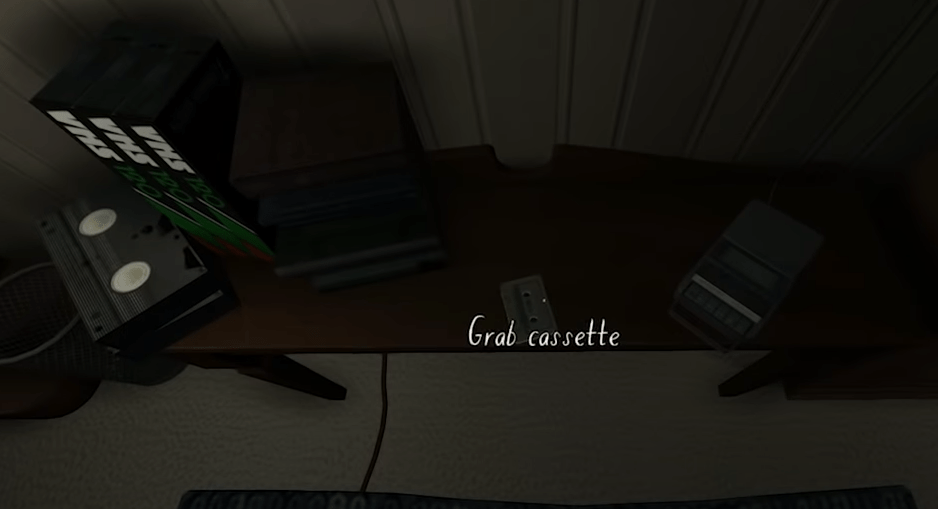Critical Play: “Gone Home”
Game Overview
Name: Gone Home
Developer: Fullbright
Publisher: Fullbright
Platform: PC, PlayStation 4, Xbox One, Nintendo Switch
Target Audience: Players who enjoy mystery and psychological drama, fans of narrative-driven exploration games, and those who want to tell stories through interaction with their surroundings.
Introduction
“Gone Home,” created by Fullbright, is a pioneer in the narrative exploration and Walking Sim genre, departing significantly from conventional game conventions by excluding direct dialogue. Instead, playing as Katie Greenbriar, a returning traveler from abroad, players investigate the deserted Greenbriar family home. Through their exploration, they put together a complex story by interacting with personal items and environmental cues in the finely furnished home. This investigation offers a deep, immersive experience by exposing intricate family stories and profound themes of love, identity, and change.
Central Argument: Architecture as a Narrative Mechanism
After playing the game, I am convinced that the Greenbriar house’s architecture in “Gone Home” does far more than just provide a background. It actively drives the story’s development. Because of the way the game is designed, I had to explore the house in an unconventional way, which leads to discoveries that reveal the family’s secrets. Every painstakingly designed space becomes a mode for unique tales and feelings. The architectural design of these areas also determines how quickly and how the story progresses as players roam across them. This strategic guidance ensures revelations are experienced in an order that maximizes emotional impact, demonstrating the intricate interplay between space and storytelling.
Learning
In my opinion, “Gone Home” has surprisingly straightforward gameplay mechanics that have a big impact. Players explore the Greenbriar house, interacting with various objects that each disclose a small piece of the story. In my case, indicated in the screenshots, this can involve listening a cassette recording discovered in a teen’s room or looking at a congratulations letter from a college friend. During my gameplay, my understanding of the lives and problems of the characters was enhanced with each encounter, contributing to the overall richness of the narrative. I felt encouraged to go deeper into a personal investigation of the game’s intricate plot thanks to its minimalist design, which places a strong emphasis on interaction and exploration.
I believe that exploration and discovery by the player drives the dynamics of “Gone Home.” The intricate emotional tapestry of the Greenbriar family is pieced together by players when they come across different objects and clues. iscovering a series of letters, for instance, might reveal a conflict between family members, profoundly altering the player’s emotional engagement and shaping their expectations for future interactions and revelations. The players’ dynamic participation adds to the storytelling, personalizing each experience as they investigate at their own pace and interpret the story in light of their findings.
Regarding aesthetics, the visual components of intimacy, nostalgia, and suspense work together to transport players to a world filled with stormy ambient noises and sentimental items that evoke the 1990s. In addition to being physically and aurally captivating, this isolated and intriguing location is essential to the storytelling technique since it strengthens the audience’s emotional attachment to the story. By using outdoor exploration instead of traditional narration, the gameplay encourages players to assume the role of a detective and piece together the secret history of a family. This method amplifies individual player interpretation and involvement, utilizing different types of fun—sensation from detailed environments, narrative discovery from interactive clues, the intellectual challenge of connecting these clues, and the ongoing discovery that progressively reshapes the narrative.
Evidence and Analysis
The effectiveness of “Gone Home” in environmental storytelling is evident in how players interact with the game world. For example, during my gameplay, I discovered the a diary in a tucked-away nook which illuminated a character’s personal struggles, providing context to previous ambiguous clues. The developers pay painstaking attention to detail by presenting evidence deliberately throughout the game to support a coherent story. Each room in the house is based on a distinct part of the family’s life, which is gradually exposed through exploration. The transitions between areas or rooms also play a vital role in pacing the plot in my opinion.


Comparitive Analysis
In contrast to other mystery games such as “Life is Strange,” which euses character interactions and time manipulation to drive the plot, “Gone Home” emphasizes a deep and intimate investigation of space and memories, while classic mystery games frequently rely on puzzles. Gone Home” focuses on atmosphere and environmental storytelling, utilizing its setting actively to unfold the story rather than following explicit narrative arcs driven by player choices. It does this by actively using its location and space to convey its story. By letting the story develop through player exploration and inquiry, this method redefines the genre of video games and challenges traditional narratives. It also shows the power of physical space exploration as a narrative driver.
Conclusion
I believe that “Gone Home” serves as an example of how a very engaging game with straightforward gameplay and intricate storytelling can be produced using the MDA framework and different types of fun. Through investigation and interaction, this game demonstrates the capacity of interactive media to tackle difficult issues like family, identity, and the passing of time. “Gone Home” subverts conventional game design by emphasizing emotional resonance and environmental storytelling over action or puzzles, and it fundamentally alters how people view the narrative richness and emotional engagement of video games. The gaming business is greatly impacted by its ability to create captivating narratives through investigation, highlighting the idea that mysteries are just as much about the trip as they are about the resolution. “Gone Home” is still a crucial independent game that shows how the story journey itself frequently holds the key to solving big puzzles.



